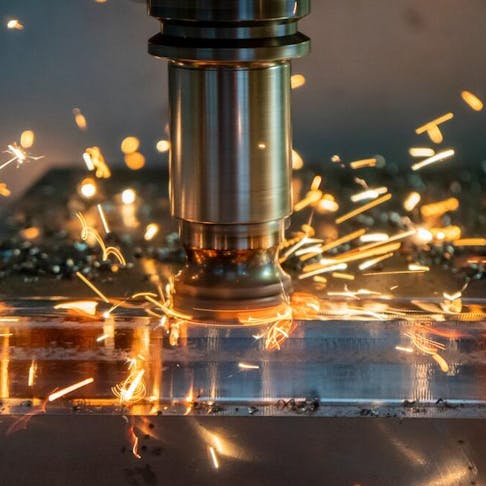The Role of Fasteners and Machining in High-Quality Product Style
The Role of Fasteners and Machining in High-Quality Product Style
Blog Article
Navigating the World of Fasteners and Machining: Techniques for Accuracy and Speed
In the elaborate world of fasteners and machining, the quest for precision and speed is a continuous obstacle that requires thorough interest to detail and critical preparation. From recognizing the diverse range of fastener kinds to selecting ideal products that can stand up to extensive demands, each action in the process plays an essential function in achieving the preferred outcome. Precision machining strategies even more raise the intricacy of this craft, requiring a delicate balance in between technological competence and cutting-edge methods. As we dive into the strategies that can enhance both speed and efficiency in this domain name, the interaction between quality assurance steps and operational quality emerges as a crucial centerpiece.
Understanding Bolt Kind
When selecting bolts for a project, comprehending the numerous kinds available is vital for making certain ideal performance and integrity. Screws are utilized with nuts to hold products with each other, while screws are functional bolts that can be used with or without a nut, depending on the application. Washers are necessary for dispersing the tons of the bolt and avoiding damage to the material being fastened.
Selecting the Right Materials
Comprehending the importance of selecting the appropriate materials is vital in making certain the optimal efficiency and dependability of the chosen fastener types discussed formerly. When it involves fasteners and machining applications, the product option plays an important function in figuring out the overall strength, resilience, rust resistance, and compatibility with the designated environment. Various products supply varying buildings that can dramatically affect the efficiency of the bolts.
Usual materials made use of for fasteners include steel, stainless-steel, aluminum, titanium, and brass, each having its one-of-a-kind staminas and weaknesses. Steel is renowned for its high toughness and resilience, making it appropriate for a vast array of applications. Stainless steel uses superb rust resistance, suitable for environments prone to moisture and chemicals. Aluminum is lightweight and corrosion-resistant, making it suitable for applications where weight reduction is important. Brass is frequently chosen for its visual charm and excellent conductivity. Titanium is known for its exceptional strength-to-weight proportion, making it excellent for high-performance applications. Selecting the appropriate material involves taking into consideration aspects such as stamina requirements, environmental problems, and budget constraints to ensure the desired efficiency and durability of the bolts.
Accuracy Machining Techniques

In enhancement to CNC machining, other precision methods like grinding, transforming, milling, and boring play essential functions in bolt production. Grinding assists achieve great surface coatings and tight dimensional tolerances, while transforming is usually utilized to develop cylindrical elements with specific diameters. Milling and exploration operations are necessary for shaping and producing openings in bolts, ensuring they satisfy specific specifications and feature appropriately.
Enhancing Speed and Effectiveness
To maximize fastener production procedures, it is vital to improve procedures and carry out effective strategies that match accuracy machining methods. One vital strategy for enhancing speed and performance is the implementation of lean manufacturing principles. By minimizing waste and concentrating on continual improvement, lean practices help maximize and get rid of traffic jams operations. Furthermore, buying automation innovations can dramatically increase manufacturing rate. Automated systems can handle recurring tasks with accuracy and rate, enabling workers to concentrate on even more facility and value-added tasks. Adopting Just-In-Time (JIT) inventory administration can likewise boost performance by ensuring that the right products are readily available at the appropriate time, lessening excess supply and reducing lead times. Moreover, fostering a culture of collaboration and communication among team members can improve overall efficiency by promoting openness, analytical, and advancement. By incorporating these approaches, manufacturers can attain a balance between speed and accuracy, inevitably enhancing their one-upmanship in the fastener sector.
High Quality Control Actions
Carrying out strenuous high quality control measures is important in making certain the integrity and uniformity of bolt items in the production procedure. Quality control measures include numerous phases, beginning from the selection of resources to the last inspection of the completed bolts. One fundamental aspect of quality assurance is performing complete product inspections to verify compliance with specs. This entails evaluating elements such as product make-up, toughness, and resilience to ensure that the bolts meet discover this industry standards. Additionally, keeping track of the machining refines is vital to maintain dimensional accuracy and surface finish quality. Utilizing innovative modern technology, such as computerized examination systems and accuracy measuring tools, can enhance the accuracy and performance of quality assurance treatments.
Regular calibration of devices and machinery is important to keep consistency in production and make sure that fasteners satisfy the needed resistances. Implementing stringent methods for identifying and resolving non-conformities or flaws is essential in avoiding substandard items from entering the market. By developing a comprehensive high quality control structure, suppliers can copyright the reputation of their brand and supply bolts that meet the greatest requirements of efficiency and resilience.
Conclusion

In the complex world of bolts and machining, the mission for precision and rate is a continuous difficulty that requires careful attention to detail and critical planning. When it comes to fasteners and machining applications, the material selection plays a critical duty in determining the overall strength, resilience, corrosion resistance, and compatibility with the intended setting. Accuracy machining entails numerous you can try these out innovative approaches that make sure the limited tolerances and specs required for bolts.In enhancement to CNC machining, various other precision methods like grinding, turning, milling, and drilling play essential duties in bolt production.To optimize bolt manufacturing procedures, it is crucial to simplify procedures and carry out efficient strategies that enhance accuracy machining methods.
Report this page